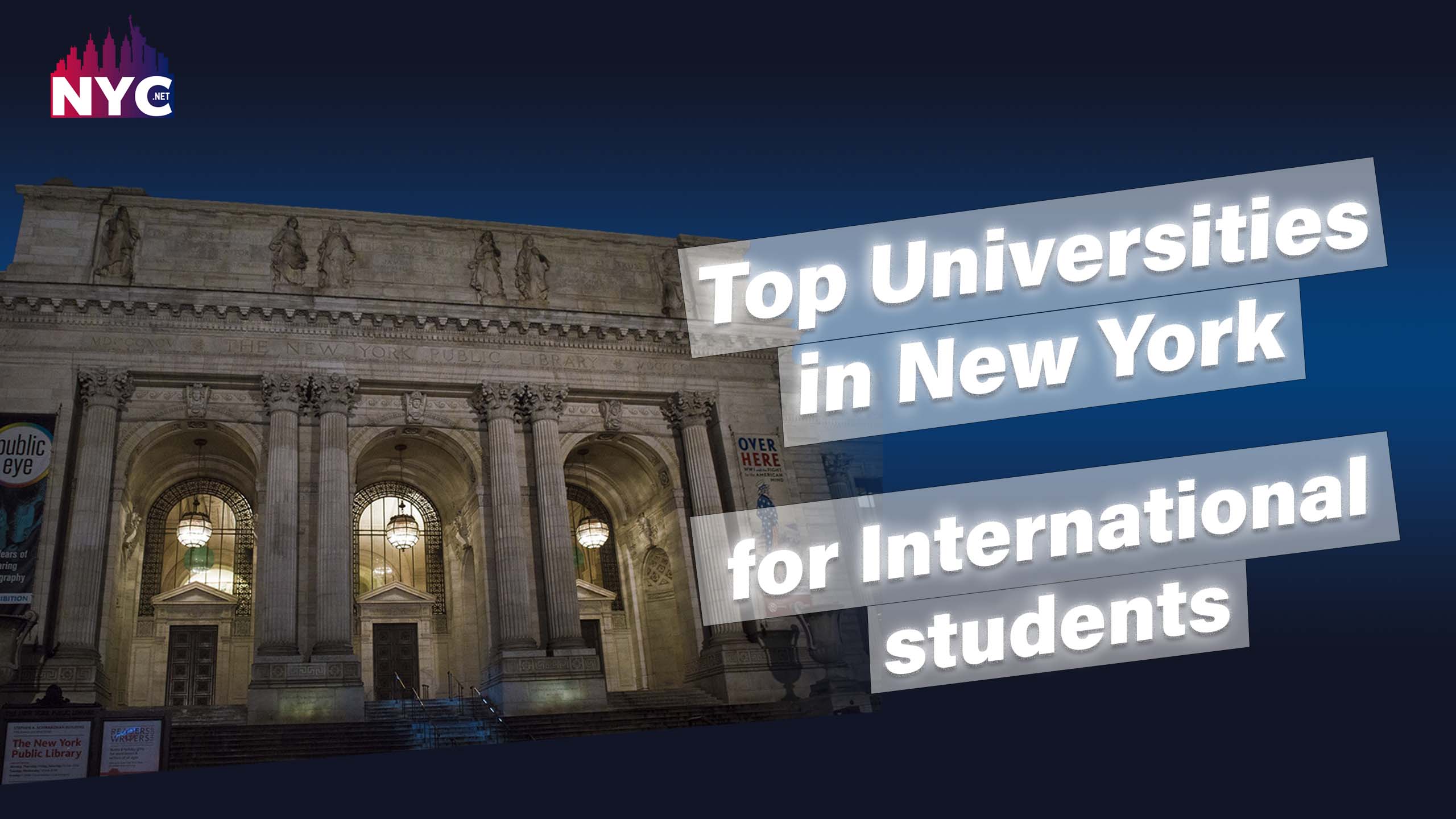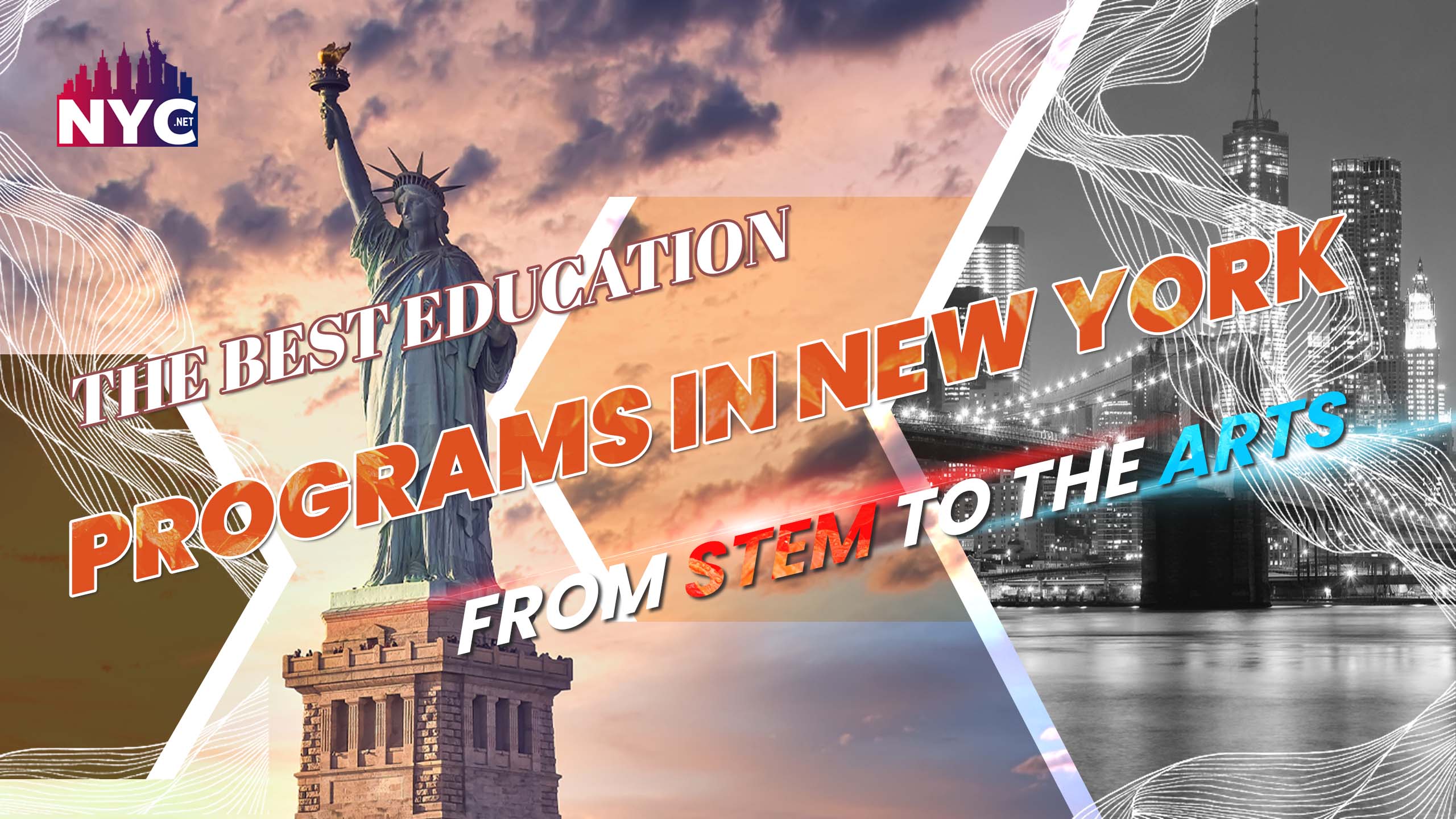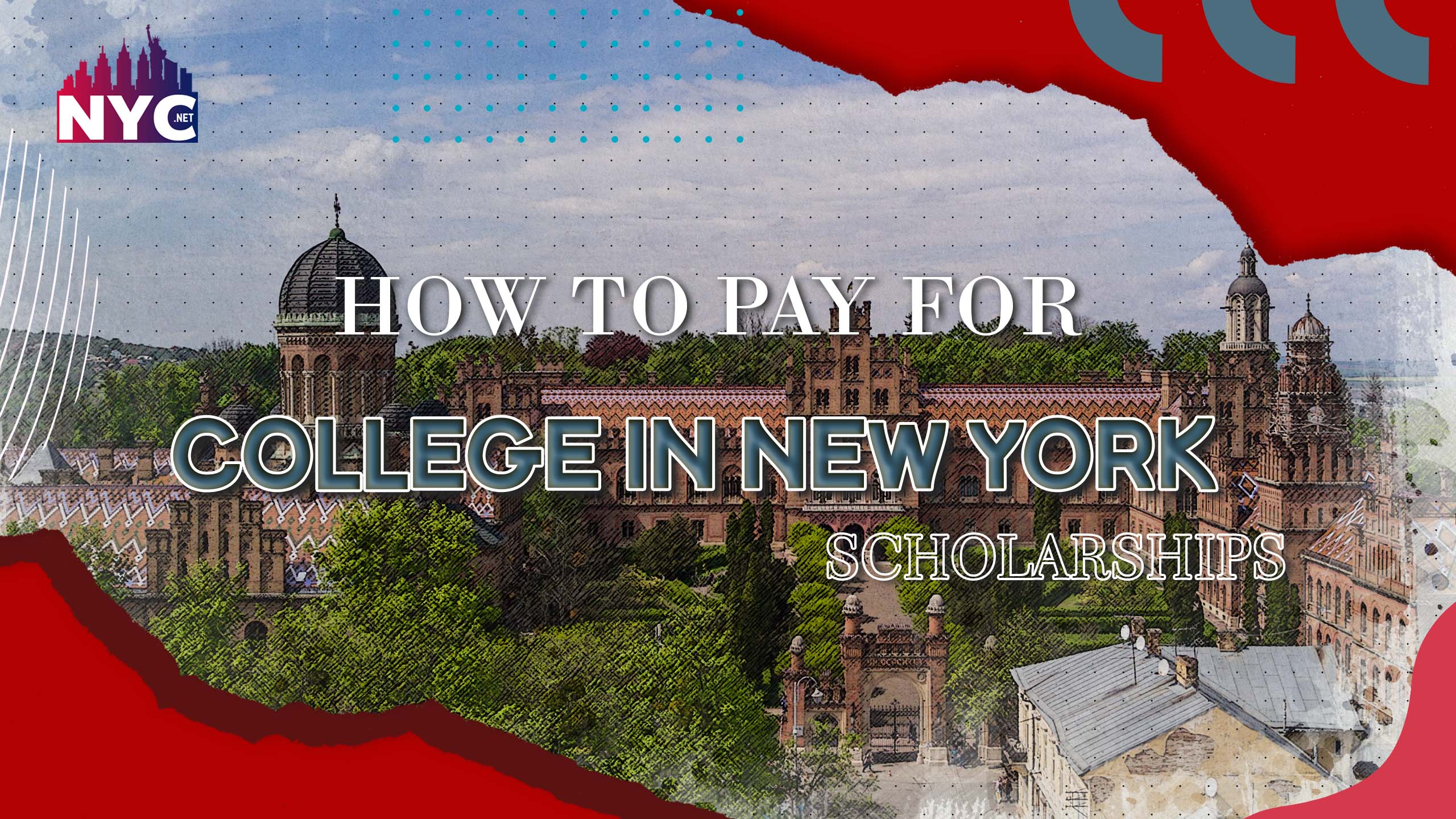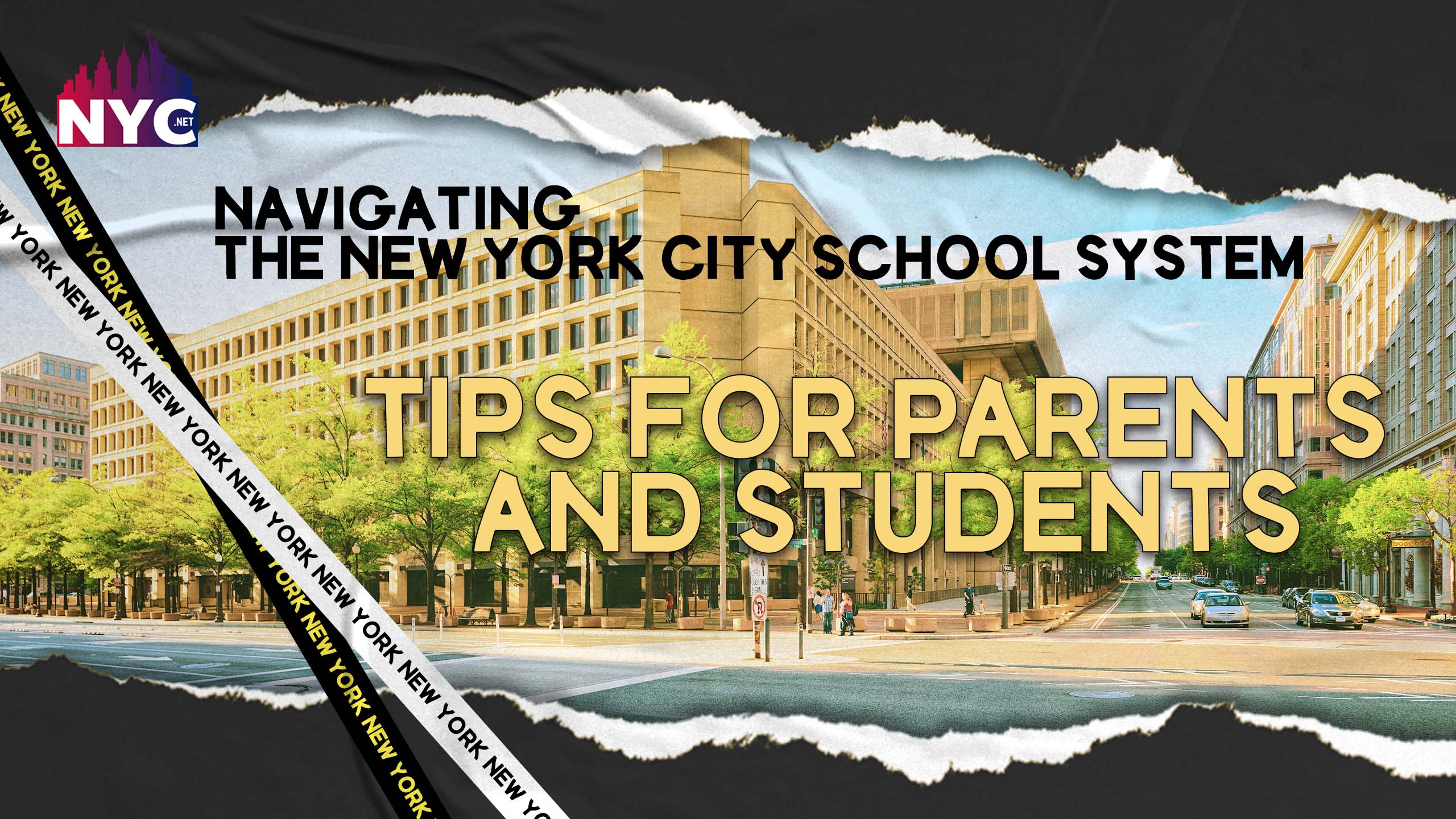Top Universities in New York for International students

Top Universities in New York
New York City is an attractive option for international students looking for a university in the United States. The city has some of the best universities in the world and offers countless opportunities to learn and grow. But which universities should you look into first? To help make your decision easier, we’ve compiled a list of the top universities in New York for international students.
Read on to learn more about each school and what they can offer you as you pursue higher education abroad. There is no doubt that studying in New York is a dream for many students, but studying at a university in such a bustling cosmopolitan city is even better. There’s no doubt that New York boasts some of the best universities in the country, plenty of opportunities, and a vibrant culture. You can choose from several top universities in New York City.

Top Universities in New York
New York, the world’s financial capital, is an ideal place to pursue higher studies. Universities such as Cornell and Columbia, renowned Ivy Leagues, provide a high standard of education.
But the city is also known for its flourishing culture and lifestyle – there is so much to experience here! From music and Broadway shows to theatre and street art, you will be amazed by the wide variety of art forms this metropolis offers.
Explore historic sites and indulge in some mouth-watering restaurants – when in New York, you’ll have countless activities to engage in. Enrolling at one of its universities means embarking on a journey that promises great memories.
University of Cornell
This is one of the top-rated universities in New York. It currently holds the 14th rank in the world. Cornell University is an Ivy League school and offers several academic and vocational courses. As the first academic institution in the city to offer Veterinary Medicine, it made history. It is one of the top universities in new york.
University of Columbia
Among the best universities in New York is Columbia University, which ranks 18th in the QS World University Rankings, and 10th in the U.S. It is also a member of the Ivy League and has alums like Barack Obama. It is a leading center for research and offers a wide range of programs.
University of New York
One of the best universities in the country and one of the world. New York University is ranked 39th in the world rankings for internalization and offers a wide range of programs. Many creative minds have been attracted to this university because it has a broad international student population with students from all over the world.
University of Yeshiva
In addition to providing top-rated education for over 100 years, Yeshiva University also explores Jewish life through various art forms, architecture, and history.
New School for Social Research
One of New York’s oldest academic institutions, it was previously known as the New School University. Last year, they celebrated their centenary. There are over 10,000 students enrolled at the university, 30% of whom are international. Its famous alums include Bradley Cooper, Tom Ford, and Burt Bacharach.
New York City University
It is one of the public universities in New York and currently ranks between 601-650 in the world rankings. With more than 24 colleges, it is the largest urban university in the country. It offers a variety of courses, including vocational courses, Ph.D. research, and evening classes.
University of Stevens
Despite being technically located in New Jersey, this institute is among the top universities in New York since it is just across the river from Manhattan Island. Science, engineering, and technology are the institute’s main focus, as the name implies.
Although it is also referred to as Innovation University, this does not mean that it does not offer other courses; there are also some courses in the arts and humanities.
University of Fordham
Fordham University, also called The Jesuit University of New York, specializes in liberal arts, business, and sciences. It offers a variety of classes for both undergraduate and postgraduate students through its 10 colleges.
If you are looking for an educational hub where you can be part of a diverse community worldwide, then New York is the place to be. Numerous institutions’ programs, therefore, are worth considering; therefore, the unity of York’s other best colleges.
New York City College
- College Barnard
- CIA (Culinary Institute of America)
- Polytechnic Institute of Rensselaer
- College of Skidmore
- University of Binghamton
- College of Cuny Baruch
The Queen’s College of the City University of New York
New York has plenty of options for students to explore, like the Museum of Modern Art and The Metropolitan Museum of Art. Everyone is welcome to be free on Friday nights from 4 pm to 8 pm!
However, other days still offer discounts for those in education. Not only that, but citizens and students of New York State, New Jersey, or Connecticut can choose their prices at these attractions.
Furthermore, other ways to enjoy the city include free ferry rides through Staten Island or a picnic in Central Park. Other outdoor experiences include a stroll through Chelsea Market and the Brooklyn Botanical Garden. There’s much more to explore, so don’t miss out!
What to consider when choosing a university
There are a few things to consider when choosing a university, especially as an international student. Here are some of the things you should keep in mind:
- -Location
- New York is a big city with a lot to offer but it can also be overwhelming. Consider what kind of environment you want and if you want to be in a bustling city or a more laid-back college town.
- Size
- New York has both large and small universities. Think about what kind of atmosphere you prefer and if you want a more intimate setting or a larger campus.
- Academics
- Of course, you’ll want to ensure the university has the programs and majors you’re interested in. But also look at the faculty and see if they’re researching areas that interest you.
- Cost
- Unfortunately, tuition can be expensive, especially for international students. Make sure to look into scholarships and financial aid options so that you can afford the school that’s right for you.
The admission process for international students
- Regarding international students, the top universities in New York all have different requirements and processes for admission. However, there are some general steps that all students will need to follow to be considered for admission.
- The first step is to submit a completed application. This will include transcripts, test scores, essays, and letters of recommendation. Once the application is complete, it will be reviewed by the admissions committee.
- If the committee believes the student is a good fit for the university, they will invite the student to an interview. The interview is an opportunity for the student to show their personality and demonstrate why they would be a good addition to the university community.
- After the interview, the admissions committee will decide whether to offer the student admission. If admitted, the student will then need to complete any remaining requirements, such as submitting financial documentation or completing a visa application.
The students must follow this admission process to study at top universities in New York.
The Criteria of the University for International Students
There are many top universities in New York for international students, but the criteria for each university may vary. Some common criteria that international students should look for when choosing a university include the following:
- The availability of student visas
- The climate of the region where the university is located
- The average cost of living in New York for students
Here is a comprehensive overview of student living expenses in New York City that you should be aware of before enrolling in a university there.
Average Cost of Expenses (USD)
- USD 32,000 – USD 40,000 (INR 25-31 lakhs) per year in tuition fees
- Per month, rent is USD 1,288 – USD 3,864 (INR 1-3 Lakh)
- USD 2,670 (INR 2 lakh) per year on food
- Monthly conveyance of USD 127 (INR 9,373)
- Monthly utilities USD 70.83 – 200.00 (INR 5,227 – 14,760)
- USD 1500 – 2500 (INR 1,10,000 – 1,83,000) per year for health insurance
- Dollars 5000 – 6000 (INR 3,66,638 – 4,40,000) per year for other essential expenses
- It is the average cost you have to pay to study at a top university in New York
Conclusion
No matter your academic or professional goals, there’s a good chance you can find a top university in New York to help you achieve them. Moreover, getting admission to one of the top universities in New York is not easy.
This blog should have cleared your doubts about studying in New York. SupposeSuppose you are trying to get admission to one of the universities mentioned above. In that case. In that case, you should get in touch with our Leverage Edu experts to get admission to the university of your choice so that your dream becomes a reality! Our services are free, so sign up for a free session with us!



